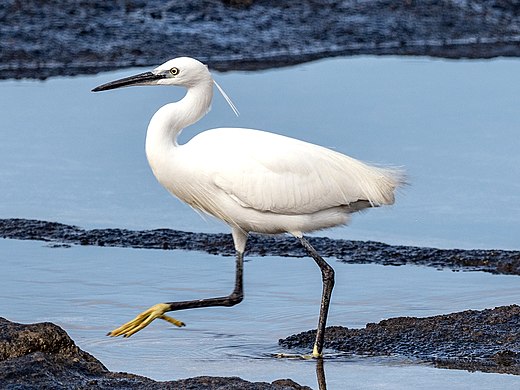The egret is a common large wading bird belonging to the family Heronidae. They are commonly found in wetlands and coastal areas around the world. Here are detailed information about egrets and their living habits:

Body size: Egrets are relatively large, with a body length of about 80-100 cm and a wingspan of about 130-150 cm.
Feather color: Mainly white feathers all over the body, with black beak, legs and feet.
Mouth: Long and tapered, good for catching prey.
Physiological characteristics: It belongs to the family of long-legged herons. Its long legs give it an advantage when wading in water to feed.
Egrets are widely distributed in warm areas on all continents around the world, including Africa, Europe, Asia, Australia, and the Americas.
They mainly inhabit marshy areas around lakes, rivers, swamps, coastlines, rice fields and other bodies of water.
Egrets mainly feed on fish, frogs, aquatic insects, worms and other small aquatic animals, and also prey on aquatic plants.
Egrets usually form breeding colonies during the breeding season. They like to nest in trees, often choosing to build their nests on higher branches.
The female bird lays 3-5 eggs per clutch, and the incubation period is about 23-25 days.
Egrets usually forage alone or in pairs in freshwater lakes, swamps, rice fields and river banks.
When foraging, egrets often extend their necks and mouths quickly to capture prey.
Egrets are migratory birds, and some subspecies migrate with the seasons.
In North America and Europe, they typically breed during the summer and migrate south to warmer areas during the winter.
Overall, the egret is an elegant bird known for its beautiful appearance and unique way of foraging, and plays an important role in wetland ecosystems.
animal tags: egret
We created this article in conjunction with AI technology, then made sure it was fact-checked and edited by a Animals Top editor.